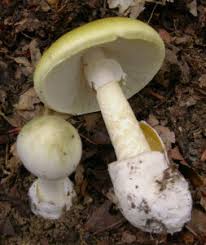Death Cap Mushrooms: A Lethal Invader’s Global Spread Sparks Medical Breakthroughs and Safety Warnings

A Growing Global Threat
The death cap (Amanita phalloides) stands as the world’s most poisonous mushroom species. This deadly fungus is so potent that just half a mushroom contains enough toxin to kill an adult human, and it is responsible for 90% of mushroom-related fatalities annually.
Recent Incidents and Global Spread
A recent tragic incident in Australia highlighted the mushroom’s dangers when a woman unknowingly served beef Wellington containing dried death cap mushrooms to her relatives, resulting in three deaths and leaving one person in critical condition.
Originally native to the UK and Ireland, the death cap has become an invasive species worldwide, spreading to Australia and North America. In North America, it has rapidly expanded throughout California and reached as far north as British Columbia.
Identification Challenges and Risks
What makes the death cap particularly dangerous is its resemblance to several edible mushroom species. The mushroom’s caps can range in color from greenish yellow to brown, tan, or rarely white, and measure between 4 to 16 cm in diameter.
Medical Impact and Treatment Developments
Death cap poisoning follows a distinctive pattern: after a latency period of 6 hours, victims experience a triphasic reaction including dysentery, false recovery, and finally, a hepatorenal phase involving multiple organ failure. Treatment typically involves supportive care, promoting toxin elimination, and administering potential antidotes. While no established antidote exists, treatments such as N-acetylcysteine and silibinin have shown some promise.
Prevention and Safety Measures
Experts strongly advise against amateur mushroom foraging without proper expertise. The safest approach is to go foraging with experienced experts or join a local mushroom club. For those who wish to consume mushrooms, purchasing them from reputable sources remains the safest option.
